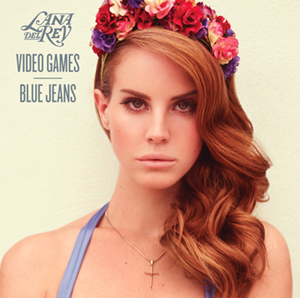 Very, very rarely, an artist will come along who will completely change your perspective on music, and when you find them, it kind of blows your mind that you’ve lived your entire life without hearing their work. I haven’t found many life-changing artists in my day (although Avril Lavigne did introduce me to the magic of tween angst) and with the exception of easy, mindless pop, I expect quite a bit out of music; it really has to steal my soul to get more than a few half-hearted iPod plays. That’s why I just had to share what I have been literally listening to nonstop this past week: Lana Del Rey’s Born to Die.
Very, very rarely, an artist will come along who will completely change your perspective on music, and when you find them, it kind of blows your mind that you’ve lived your entire life without hearing their work. I haven’t found many life-changing artists in my day (although Avril Lavigne did introduce me to the magic of tween angst) and with the exception of easy, mindless pop, I expect quite a bit out of music; it really has to steal my soul to get more than a few half-hearted iPod plays. That’s why I just had to share what I have been literally listening to nonstop this past week: Lana Del Rey’s Born to Die.
Lana first gained popularity with a hypnotic homemade video for her first single “Video Games” last fall, and has rapidly become famous with the January release of her debut album Born to Die. To sum up Lana’s sound in a few words, I would have to say that it is chilling, seductive, tragic and completely addictive. Born to Die soars as it weighs on your heart, and I can’t help but be completely in love with it. The album takes its time through slow and beautiful tracks that are eerily dreamlike with the duo of smooth melodies and Lana Del Rey’s half-gritty, half-angelic vocals. Tracks “Born to Die” and “Blue Jeans” are haunting, melancholy confections that you never want to end; they are highlights in the tragic love story that is the album, and set the mood for the following songs. “Diet Mountain Dew,” “National Anthem” and “This Is What Makes Us Girls” have a flowy, hip-hop feel that offer some relief from the innate sadness of the rest of the album and, if I could compare, are a little reminiscent of Lady Gaga. “Radio” and “Without You” are probably my favourites for their stunningly beautiful softness; “Radio” is like listening to the 1950s in the heart of Americana, if you can imagine it. In fact, Del Rey’s entire album could be the soundtrack to the pastel period. Lana Del Rey herself could have walked straight out of the mid-20th century, which perhaps is what makes her so refreshing and chic; she embodies a lost beauty to today’s music.
 While Born to Die takes my breath away, debut albums are never without faults. Despite the almost overwhelmingly smooth production of the tracks, Del Rey’s voice is at times underdeveloped, or worse, false. I will be the first to uphold the fact that she is extremely talented as both a singer and songwriter, but the occasional unrefined vocal detracts from a theoretically flawless album. However, it’s pretty common for debuts to be raw or sometimes downright awful, and I have no doubt that Del Rey will only get better. Some say that Born to Die is tiresome or boring, but I disagree wholeheartedly. You have to give it a chance, like anything else, but when you allow yourself to sit back, eyes closed, and just listen, the album comes alive into this full-fledged work of audio art.
While Born to Die takes my breath away, debut albums are never without faults. Despite the almost overwhelmingly smooth production of the tracks, Del Rey’s voice is at times underdeveloped, or worse, false. I will be the first to uphold the fact that she is extremely talented as both a singer and songwriter, but the occasional unrefined vocal detracts from a theoretically flawless album. However, it’s pretty common for debuts to be raw or sometimes downright awful, and I have no doubt that Del Rey will only get better. Some say that Born to Die is tiresome or boring, but I disagree wholeheartedly. You have to give it a chance, like anything else, but when you allow yourself to sit back, eyes closed, and just listen, the album comes alive into this full-fledged work of audio art.
Overall, Born to Die is pure art. From the gleaming lyrics to the swaying beats to Del Rey’s darkly enchanting voice, the album is very stunning. Lana Del Rey’s take on music is completely different from what I’ve seen before, and there is indeed something irresistible about her aloof, bad-girl attitude. There are tiny rings of familiarity that I can’t quite seem to place, but the best I can do is describe Del Rey as an elegant Ke$ha and a reserved Taylor Momsen from The Pretty Reckless. However, her sound is completely her own, and perhaps it’s the alluring gloom, or the dark paradise, or just the concept of simple beauty in music that draws me to it so completely; perhaps I’ll never know what exactly it is. All I know is that Lana Del Rey has officially changed my perspective on what good music is, and it is very likely that I will never go another day without the auditory gold of Born to Die.
